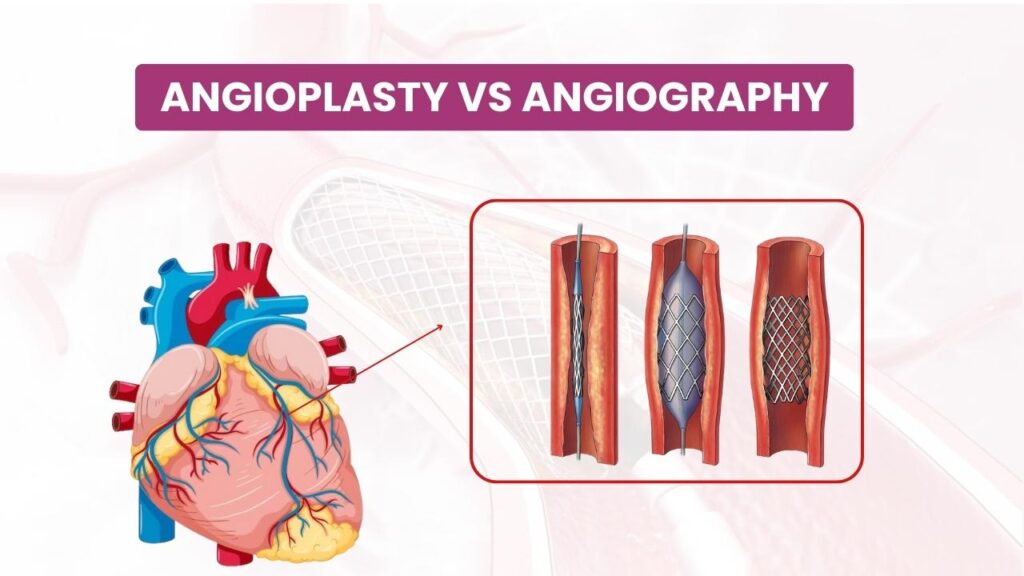What Is The Difference Between Angioplasty and Angiography?

When it comes to heart health, understanding the distinction between angioplasty and angiography is crucial. While these terms sound similar, they refer to different procedures used in diagnosing and treating cardiovascular issues. Let’s explore what each procedure entails and highlight their key differences. What is Angiography? Angiography is a diagnostic procedure that provides detailed images of the blood vessels and the heart chambers. It’s primarily used to identify blockages, abnormalities, or other issues within the blood vessels. Purpose: Angiography helps doctors detect conditions like coronary artery disease, aneurysms, and blood clots by visualizing the blood vessels. Procedure: A contrast dye is injected into the bloodstream through a catheter inserted into an artery, typically in the groyne, arm, or neck. As the dye travels through the blood vessels, X-ray images are taken to reveal any blockages or irregularities. Preparation and Recovery: Patients may need to fast before the procedure. Angiography is usually done on an outpatient basis, allowing patients to go home the same day, though they might need someone to drive them. Risks: While generally safe, angiography carries risks such as allergic reactions to the dye, bleeding, or damage to blood vessels. What is Angioplasty? Angioplasty, or percutaneous coronary intervention (PCI), is a therapeutic procedure designed to treat narrowed or blocked arteries, especially in the heart. Purpose: The goal of angioplasty is to open up narrowed or blocked arteries to restore proper blood flow to the heart muscle, often necessary in cases of coronary artery disease. Procedure: A catheter with a small balloon on its tip is inserted into an artery, usually in the groyne or wrist. The catheter is guided to the site of the blockage, where the balloon is inflated to compress the plague against the artery walls, thus opening the artery. To maintain the artery open, a stent is frequently implanted. Preparation and Recovery: Preparation involves fasting and possibly adjusting medications. Recovery may require a hospital stay for a day or two for observation, especially if a stent is placed. Risks: Risks include artery damage, bleeding at the catheter site, and, rarely, heart attack or stroke during the procedure. Key Differences Purpose: Angiography is used for diagnostic purposes to visualize blood vessels and identify problems, whereas angioplasty is a treatment method to open up blocked arteries. Procedure: Angiography involves injecting dye and taking X-rays to view blood vessels, while angioplasty involves inflating a balloon to clear blockages and placing a stent. Outcome: Angiography provides diagnostic images, while angioplasty directly addresses the blockage to improve blood flow. Conclusion Both angiography and angioplasty are vital in managing heart conditions. Angiography helps doctors diagnose cardiovascular problems by providing clear images of the blood vessels, while angioplasty offers a solution by restoring proper blood flow through the arteries. Knowing these processes will enable you to make well-informed judgements on the condition of your heart. Always consult with your healthcare provider for advice tailored to your specific medical needs. Your heart health is important, and knowing the appropriate procedures can make a significant difference in your well-being.


